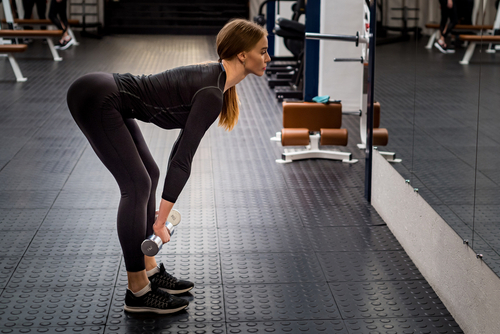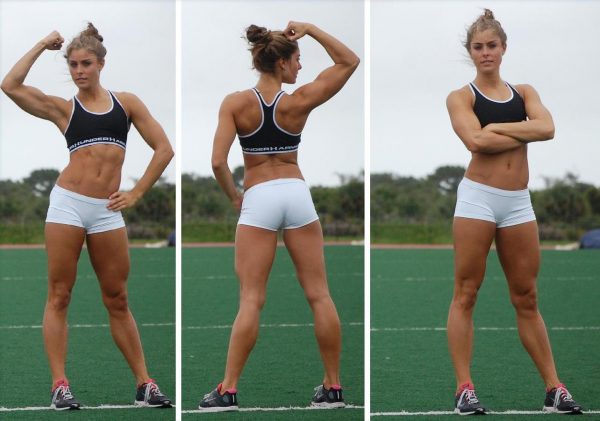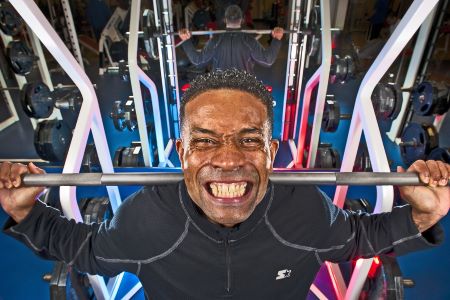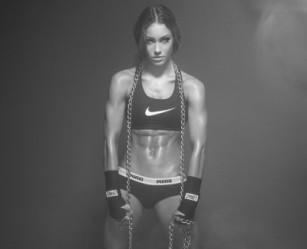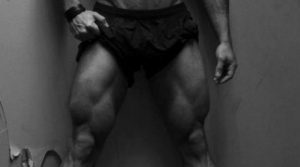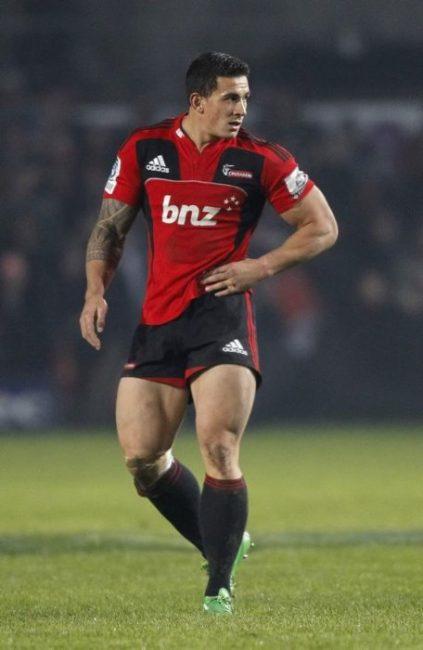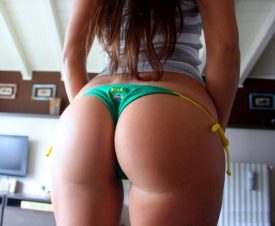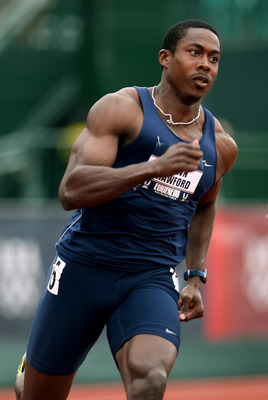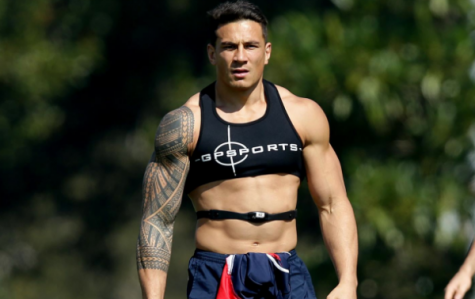Are you looking for legs that are strong and athletic without them being too big and bulky?
You want legs that look good and can perform, and that is why we have put together a list of the best leg exercises to help you achieve that goal.
Legs can be hard to build, and many people avoid working them out completely because they do not want big bulky legs, but strong toned legs instead.
But if you focus on the right exercises and truly work hard on leg day, you can have strong legs with athleticism that will turn heads.
Let’s get started.
13 Best Exercises to Build Athletic Legs
If you want legs that are strong and athletic, these would be the best leg exercises to choose from.
Back Squats
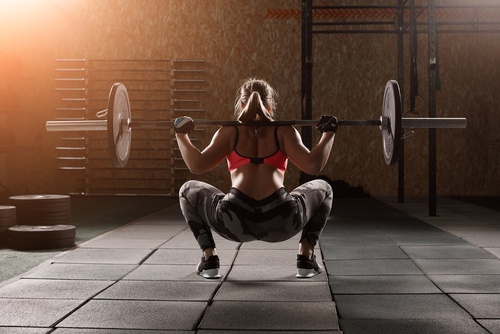
The squat is the king of all leg exercises, and it’s one that everyone should be doing. It works your quads, hamstrings, and glutes. Start with just bodyweight if you’re not used to squats or get someone to spot you until you get the form down.
To do the squat, stand with your feet shoulder-width apart and pointing forwards. Slowly bend your knees until your thighs are parallel to the floor, pause for a second and then return to the starting point while exhaling.
You should aim for squats that let you go all the way down until your thighs are parallel with the ground at least.
Make sure you don’t lean forward too much or stick out your rear end either (I’m talking to guys here). Keep looking straight ahead and keep your back straight too — imagine there’s a board running along it and try to keep that feeling even when squatting.
Lunges
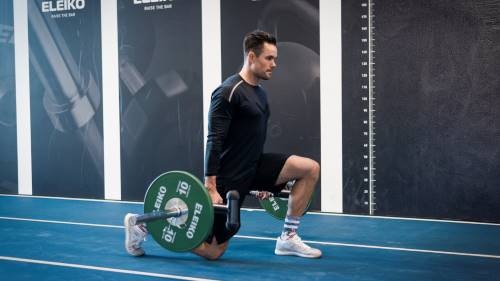
Lunges are an excellent exercise for the legs because they work your front leg muscles as well as your rear ones. It also makes for a good cardio workout because you’re standing on one leg and moving slowly to keep yourself balanced.
Stand up straight with your feet hip-width apart. Lunge forward with one leg and squat down simultaneously until your back knee is a couple of inches away from the ground. The heel of this foot should be raised, while planting it into place so that you can maintain an upright posture throughout this move.
There are also many variations of the lunge including the side lunge, reverse lunge, and walking lunge.
Overall this is one of the best lower body exercises there is.
The Romanian deadlift targets your hamstrings and glutes, so it’s a good addition to your leg routine. Start by standing up straight with feet shoulder-width apart and bend forwards from the hips so your torso makes a 90-degree angle with your legs.
Keep your head looking forward and slowly move one of your arms down towards the floor, while also bending at the knees slightly — just make sure not to round out your back too much. Once you reach this point pause for a second before coming back up again in one motion, making sure to squeeze the glutes and hamstring muscles on top of each leg during the movement.
Bulgarian Split Squats
The Bulgarian Split Squat is one of the best exercises for building up your legs, butt, core and stabilizer muscles. They also help increase mobility, build coordination and improve balance.
It looks like this: Hold a dumbbell in each hand and stand about one foot in front of the bench. Place one foot, laces down on top for stability as you brace your core while squatting until both knees bend 90 degrees or go below parallel with the floor (don’t let it touch). Hold this position briefly before driving back up and repeat.
Sprints
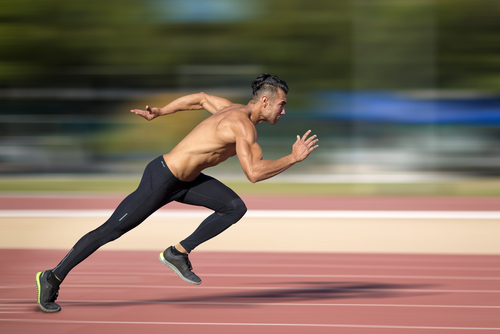
Sprints are a great workout for strengthening your core and lower body muscles. At first, you use the glutes to get up to speed quickly before all work moves onto hamstrings and quads as you reach top speed.
This is one unappreciated muscle builder that many lifters overlook or don’t feel like doing – but should be included in any good program. If your body isn’t accustomed to sprinting then new gains may spark because this type of exercise sparks an increase in hormones called Testosterone which makes physique building easier than ever before possible.
Also, if you haven’t noticed, sprinters have great legs.
Sled Pushes and Pulls
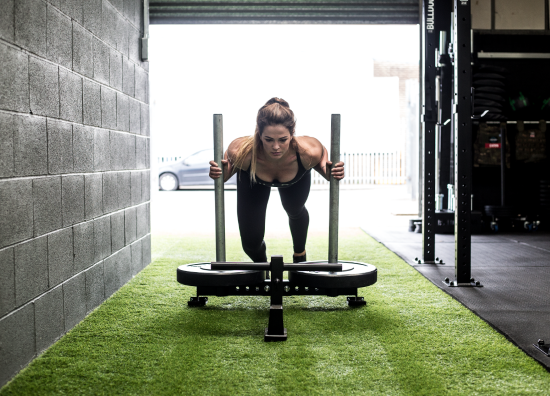
If you are looking for exercises to improve your performance in the weight room, look no further. Sled pushes and pulls are a great tool for building speed, strength, power, explosiveness, and stamina.
One great thing about sled pushes and pulls is that they are a concentric movement and there is usually no muscle soreness the next day, this also makes them great for recovery.
Sled pulls have also been shown to help improve sprint acceleration so there is an athletic benefit to doing them as well.
Try doing sled pushes or pulls as a finisher at the end of your next workout and reap the benefits.
To do a sled push, start by loading up with as much weight that you can handle for multiple sets – then stand in front of the poles with hands extended out towards them. Lean forward while keeping an angle between body & feet so it’s nearly parallel all along its length; drive slowly but steadily ahead using only leg power (don’t forget about those buns!). Continue maintaining slow rhythmical kicking motions until reaching desired distance or stopping point.
Hip Thrusts
The main muscles that the hip thrust works are your glutes and lower back, plus it can help improve your sports performance as well. If you haven’t already, check out how to do a proper hip thrust above…
Get on all fours and place a barbell over your pelvis (padding is recommended, start with a low weight if you’re not used to it)’ Slowly lift your hips off the ground until they’re in line with your shoulders and come down again — make sure you’re squeezing those glutes as much as possible every time
Single-Leg Deadlifts
The single-leg deadlift is a great exercise for targeting your hamstrings and building core strength. Start by standing up straight with one leg in front of you and the other slightly behind, keeping both feet flat on the ground.
Bend forwards from your hips so that your torso makes a 90-degree angle with your legs and reach down towards the grounded foot while keeping your upper body straight. Then slowly come back up to a standing position while squeezing those glutes at the top — make sure not to round out your back too much when doing this.
Jump Squats
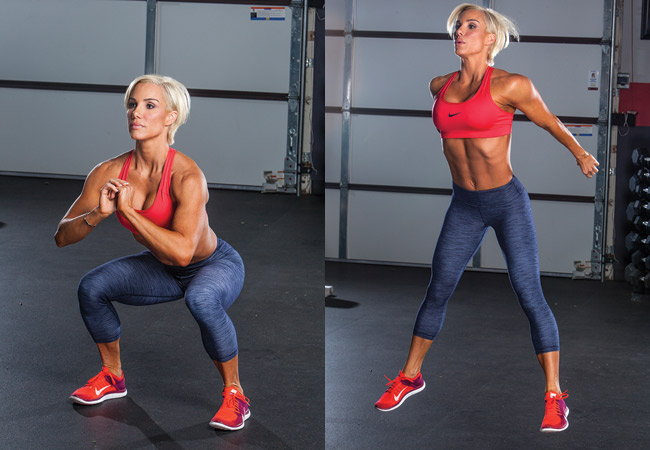
This plyometric exercise will improve your vertical jump as well as helping build your quads and calf muscles and will even make you more explosive.
Start with a normal squat position and then push yourself up as fast as you can and jump as high as you can, land safely on your feet and repeat.
You can also move on to box jumps if you get bored with regular jump squats.
Bike Riding
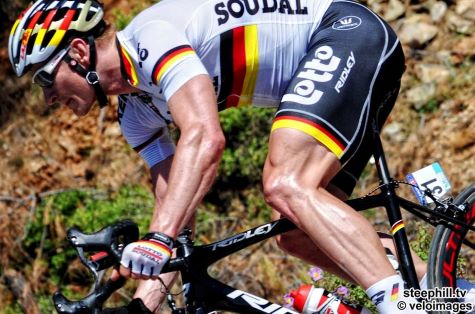
Have you ever seen the legs of a serious bike rider? They are muscled and toned, not skinny and weak. And you can have strong legs too by riding a bike regularly. Make sure to ride fast though, the faster you go the better, the legs of long-distance bike riders are a bit on the twiggy side.
You should aim for around 20 minutes of hard riding 3 days a week for best results.
Calf Raises
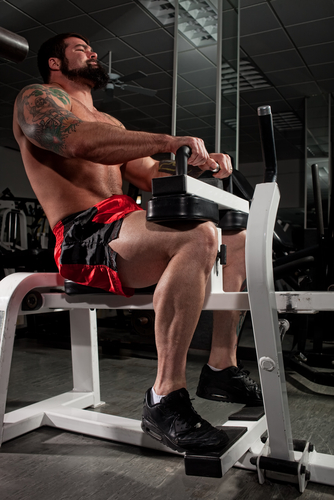
You don’t want to be one of those dorks with athletic thighs and skinny calves do you?
Calf raises are a simple way to strengthen your calves. You can do this exercise either standing or seated. Personally, I find the standing method to work much better. Simply stand on an elevated object, let your heels hang off the edge and then raise your body up and down. So easy a caveman could do it, I’ve never seen a caveman with jacked calves though.
Goblet Squats
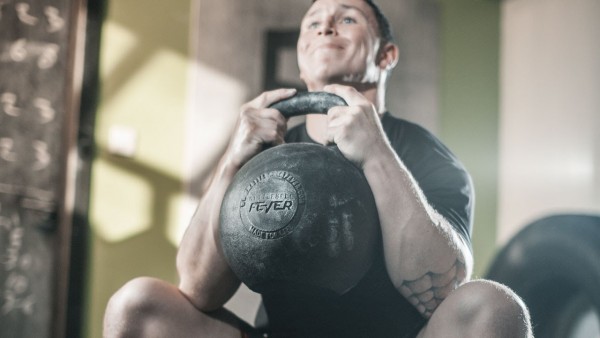
Another great leg exercise, goblet squats mainly target your quads, hamstrings, and glutes — but don’t neglect the rest of your legs. Hold a kettlebell or any other heavy object in front of you with both hands and bend down as if you were about to sit on an imaginary chair. Make sure to keep your back straight at all times because that’s where most injuries occur when performing this exercise.
Kettlebell Swings
Kettlebell Swings are a great whole-body exercise that really hits the posterior chain hard. Hold a kettlebell in front of you with both hands and bend down as if you were about to sit on an imaginary chair.
Without pausing, swing the weight forward using momentum to gain height similar to that which you would have done if doing a real-life swing while standing still. Make sure your back is straight at all times because this is where most injuries occur when doing this exercise.
The Leg Muscles
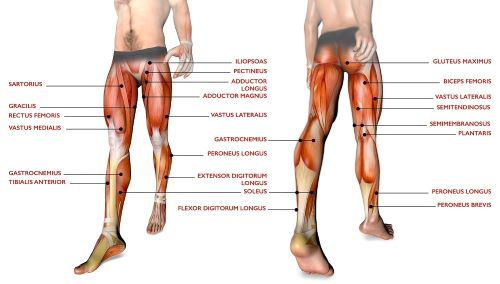
The Quads
The quadriceps are made up of four muscles: rectus femoris (the most powerful), vastus lateralis, vastus medialis and intermedias that extend the knee and play a role in hip stability. During walking exercises like farmer’s carry or prowler push, these same muscles work hard to help stabilize your knees while at the same time extending them out during any stage where you have been carrying something on your back for an extended period of time!
The Glutes
The glutes are the muscles in the buttocks. They consist of three muscles called Maximus, minimus and medius that work together to extend your hip when walking, running or jumping. As well as this they also provide some powerful contractions during the leg press exercise which is great for building strength in your legs.
Hamstrings
The hamstring muscles are located at the back of your thighs and are used to flex the knee back towards the hips. These are mainly slow-twitch muscle fibers that have great endurance making them great for sports like long-distance running or cycling where you’re legs are constantly being used over a long period of time. The hamstrings also help maintain stability in your knees when performing squats.
Calves
The calf muscles are made up of the gastrocnemius and soleus that extend down towards your heels. The calves are mainly fast-twitch fibers meaning that they have little endurance but instead contract quickly for short periods of time making them great for jumping or sprinting exercises where you need to explode really quickly.
These muscles are responsible for stabilizing the body and extending the legs when sprinting, jumping or hurdling — making them very important in sports like track and field, basketball or soccer.
Adductors
The adductor muscles are found at the inside of your thighs extending from the pelvis towards your knees. They’re responsible for moving your legs toward one another, as during a ‘V’ sit for example. These muscles also help with hip stability and knee extension which is why they’re so important in exercises such as squats and lunges.
The Benefits of Leg Training
There are plenty of reasons to train your legs that go beyond improving your muscle tone. For one thing, a lot of sports involve a fair bit of leg strength and training them will help you to get faster and jump higher more easily.
In addition, exercises like squats, lunges and plyometrics can also help with injury prevention by strengthening the muscles in your legs that support your knees limiting any potential damage from normal wear and tear! But if you do have an existing injury it’s recommended to get advice from a professional before trying these exercises on their own so they can recommend an appropriate exercise routine for you to follow.
Leg exercises can also make you more powerful and explosive. Think about it: most sports require athletes to be able to generate force quickly and explosively, which is why squats and plyometrics are often included in training programs for sprinters and basketball players.
Leg Exercises can also help you burn more calories. For example, a study in the Journal of Strength and Conditioning Research found that squats increased metabolic rate for up to 48 hours after being performed! This means that the more time you spend training your legs, the more calories your body will burn throughout the day even when you’re just watching TV or working from home.
The benefits don’t stop there either: leg exercises help strengthen your bones keeping them healthy and able to function properly. It also helps stimulate growth hormone production which is important for maintaining muscle mass as well as bone health so it’s particularly relevant for older people wanting to stay active and mobile. Plus, they also make you look better – increasing the size of your legs makes them look bigger overall helping to reduce any excess fat stored on your thighs and creating a more proportional shape.
Sets and Reps for Leg Training
There are many different ways to train your legs. A great way for beginners is 12-18 sets per week, but more advanced lifters might exceed this number if they’re trying specifically grow a certain muscle or part of the calf over another one in particular (such as quadriceps). Choose 3-4 exercises from this list and work them evenly into each session while balancing movements that focus on hip/knee extension with those focused only around flexion and abduction – these will provide you all an even amount of stimulus so there isn’t any preferential development at the expense of others.
A frequency of two or three workouts per week is optimal for maximizing muscle growth. If you notice your performance dropping off, it may help to split up some training volume on a day later in the week rather than abandoning all hope at once and risking injury from overtraining.
How to Warm Up Before Training Legs
A well-designed warmup can help reduce the risk of injury and improve readiness heading into your training session without generating excessive fatigue. Increased body temperature, an activated nervous system (including increased heart rate), and a prepared mental state will all lead to better performance in upcoming days work or exercise sessions. One effective way to do this is by performing exercises from today’s workout as part of one’s pregame preparation – even if it means following up with some light running beforehand!
Warming up for workouts is essential to preventing injury and ensuring good training performance. For example, if you need back squats be sure that the appropriate muscles are primed by doing light reps before increasing your intensity as you proceed towards working sets.
Use Proper Form when Performing These Exercises
People with poor form may be more susceptible to injury.
The weight of an object or a movement is not distributed equally on every part of your body, so if you have weak hips for example then it can put undue stress on other joints in the lower back causing them more harm than good over time!
Conclusion
Here are some of the best leg exercises you can use to build strong, athletic legs that look good.
Use these exercises in your workout routine to build significant muscle with high frequency, increasing the amount of work you do per week without hitting yourself with too much excessive volume.
Do these workouts twice per week for optimal results with consistent progression.
Use proper form to prevent injury and ensure maximal performance.
It’s important that you warm-up before training legs so you can perform well without getting injured.
These are some of the best exercises for building athletic legs that look good and aren’t just good for looking but actually work.
Enjoy these exercises and whatever you do don’t skip leg day.
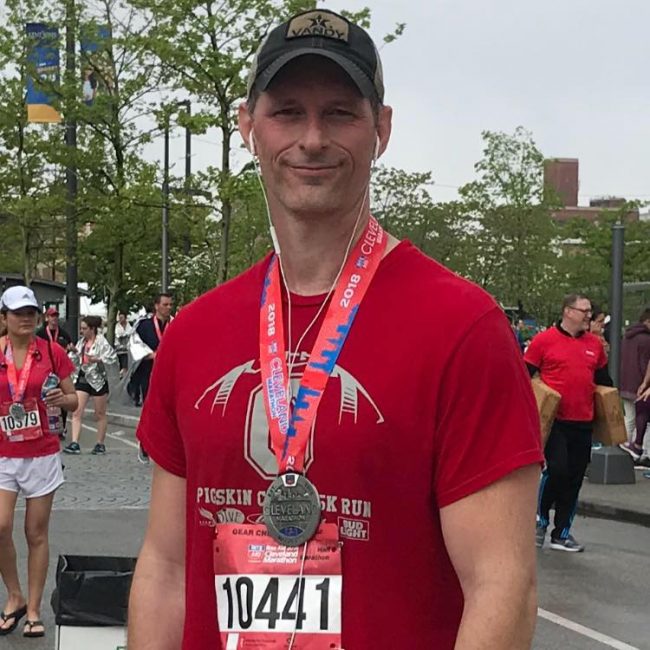
Ryan is a former college wrestler and lifelong fitness fanatic. He has run half marathons, done mud runs, placed in body transformation contests, coached wrestling, and now coaches girls’ soccer. Not to mention he has also tried literally hundreds of supplements over the years and has a vast and thorough supplement knowledge. He has written for Muscle & Strength, Testosterone Junkie, The Sport Review and other publications. He is also the editor-in-chief of this website and has over 25 years of experience in the fitness industry. Feel free to connect with him on his LinkedIn page below.

